King Charles III Banknote Designs Revealed by Bank of England
- Oops!Something went wrong.Please try again later.
- Oops!Something went wrong.Please try again later.
King Charles III is appearing on U.K. banknotes for the first time ever.
The Bank of England released images of the new King on four banknotes Tuesday (£5, £10, £20 and £50), featuring a main portrait of Charles on their front side and a smaller cameo inside the currency's see-through security window.
According to a Bank of England release, the notes are scheduled to enter circulation in mid-2024 and are otherwise unchanged from the designs used for the late Queen Elizabeth, which means that Charles will share the banknotes with Sir Winston Churchill (£5), Jane Austen (£10), JMW Turner (£20) and Alan Turing (£50).
Charles is also just the second monarch — and the first king — to feature on a Bank of England note after his mother, who first appeared in 1960 (British and English monarchs have appeared on coins for over 1,000 years.)
RELATED: King Charles Is Featured for the First Time on Circulating Coins Following Queen Elizabeth's Death
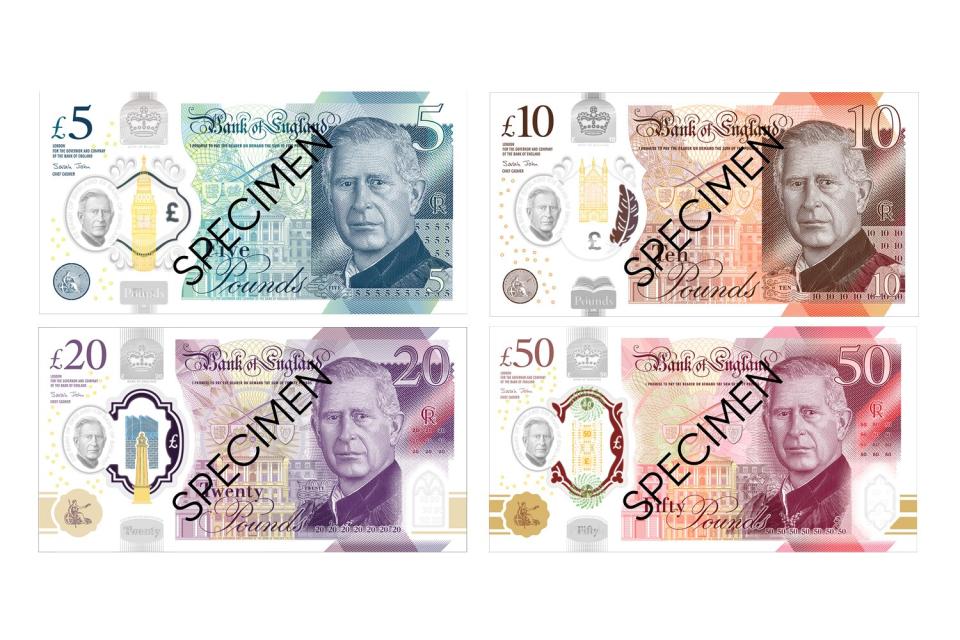
Bank of England
"I am very proud that the Bank is releasing the design of our new banknotes which will carry a portrait of King Charles III," Bank of England governor Andrew Bailey said in a release Tuesday. "This is a significant moment, as The King is only the second monarch to feature on our banknotes. People will be able to use these new notes as they start to enter circulation in 2024."
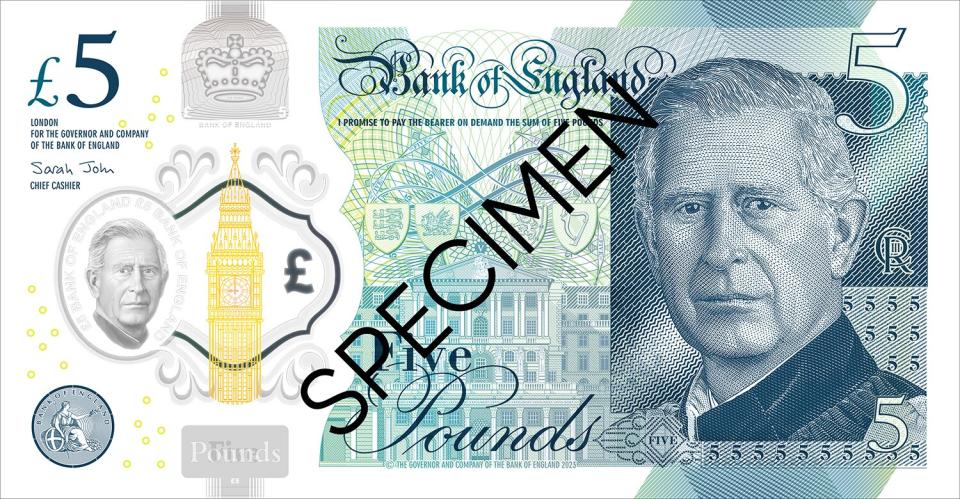
Bank of England King Charles III on the £5 banknote
All polymer banknotes carrying a portrait of Queen Elizabeth remain legal tender, and both visitors and the U.K. public can continue to use them as normal, added the Bank of England release. The King's portrait also does not feature on banknotes in Scotland or Northern Ireland.
RELATED: Royal Mint Unveils New Coins Featuring Face of King Charles III
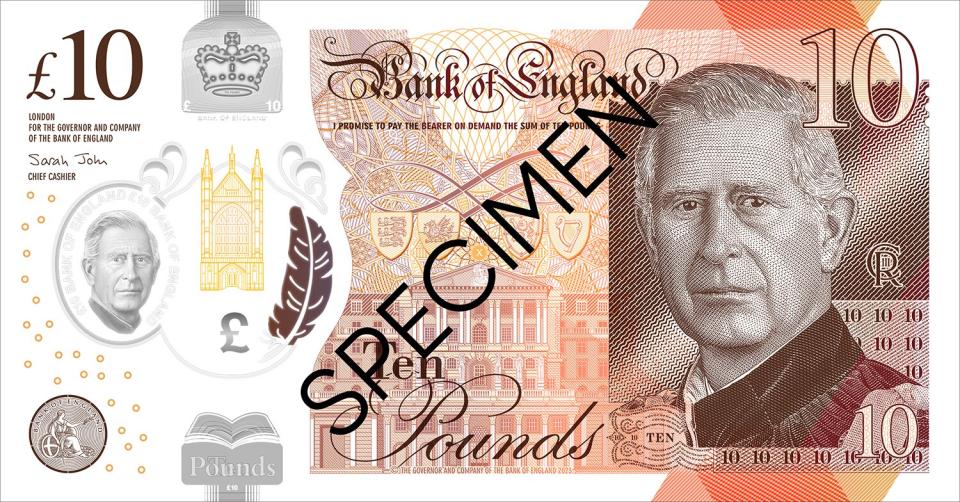
Bank of England banknotes
The notes follow the distribution of the first coins featuring the face of Charles in early December, to slowly replace those that include the face of the late Queen Elizabeth.
On the other side of the coin is a tribute to the late monarch, a design that originally appeared on her 1953 Coronation Crown. It includes the four quarters of the Royal Arms depicted within a shield. In between each shield is an emblem of the U.K. nations: a rose, a thistle, a shamrock and a leek.
News of the production was announced by the Royal Mint on Oct.28.
RELATED: Palace Shares New Photo of Charles, Camilla, William and Kate on Night Before Queen's Funeral
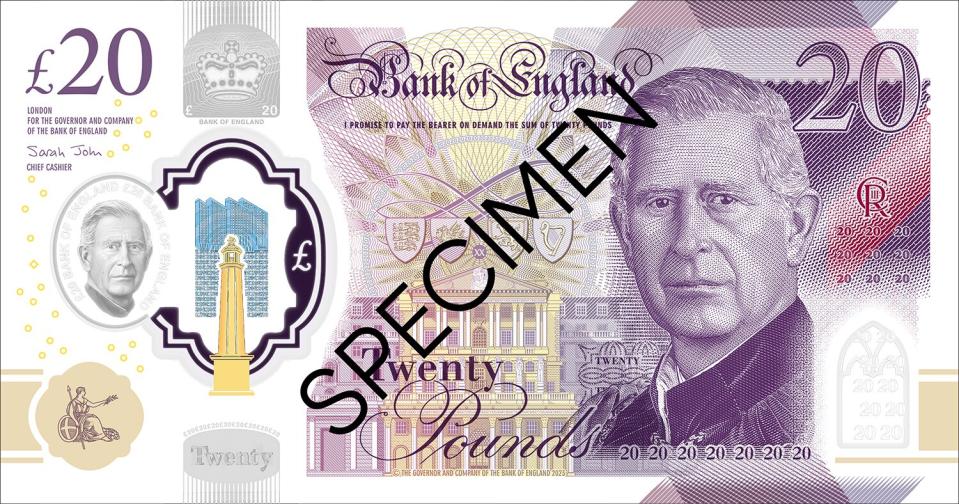
Bank of England King Charles III on the £20 banknote
"The first coins bearing His Majesty King Charles III's portrait are striking as we speak, and you can expect to see 50ps featuring the Queen Elizabeth II Memorial design on the reverse side of the coins in your change before Christmas," the Royal Mint captioned a video of the coins being produced.
"Today is a significant event because we're changing that monarch for the first time in 70 years. Today, we're striking the first coins of King Charles III," Rebecca Morgan of the Royal Mint said in the video shared on social media.
Never miss a story — sign up for PEOPLE's free daily newsletter to stay up to date on the best of what PEOPLE has to offer, from juicy celebrity news to compelling human interest stories.
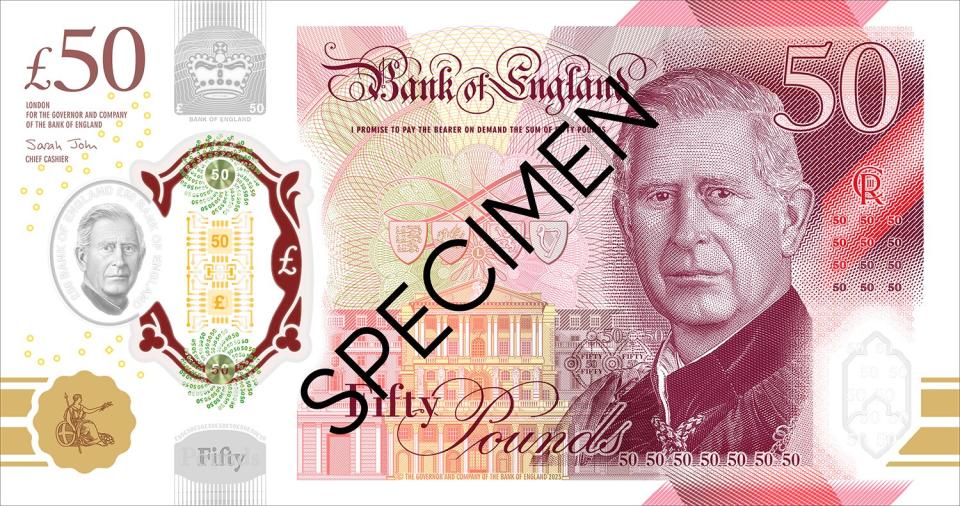
Bank of England King Charles on a £50 banknote
The Royal Mint said there would be 9.6 million of the coins going into circulation in a nod to Queen Elizabeth, who died at the age of 96 on Sept. 8.
But while the Queen faced right, Charles faces the opposite direction on the money.
"He is in this instance looking to the left, his mother looked to the right. Every monarch will be looking in opposite directions to their predecessor," designer Martin Jennings explained of a tradition dating back to the 1660s.

